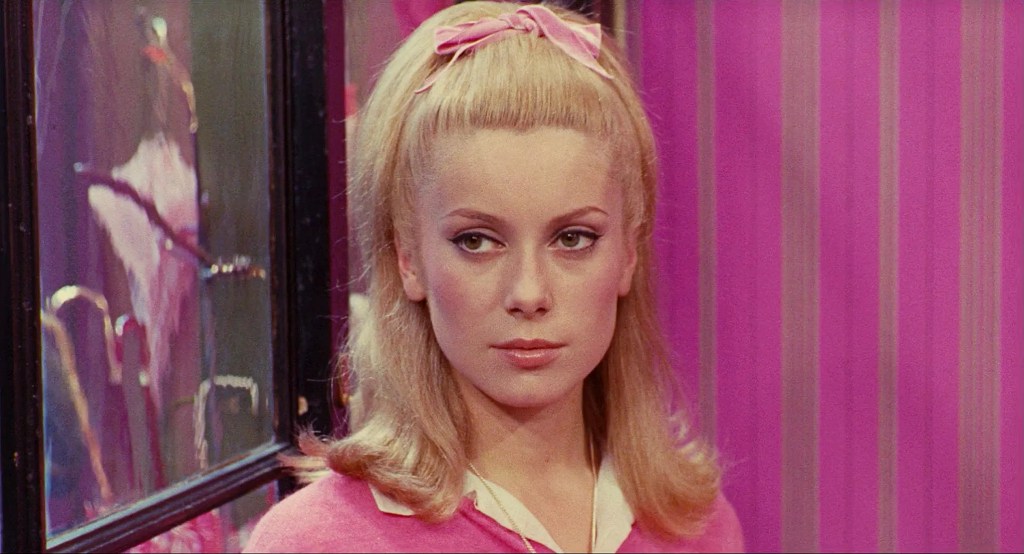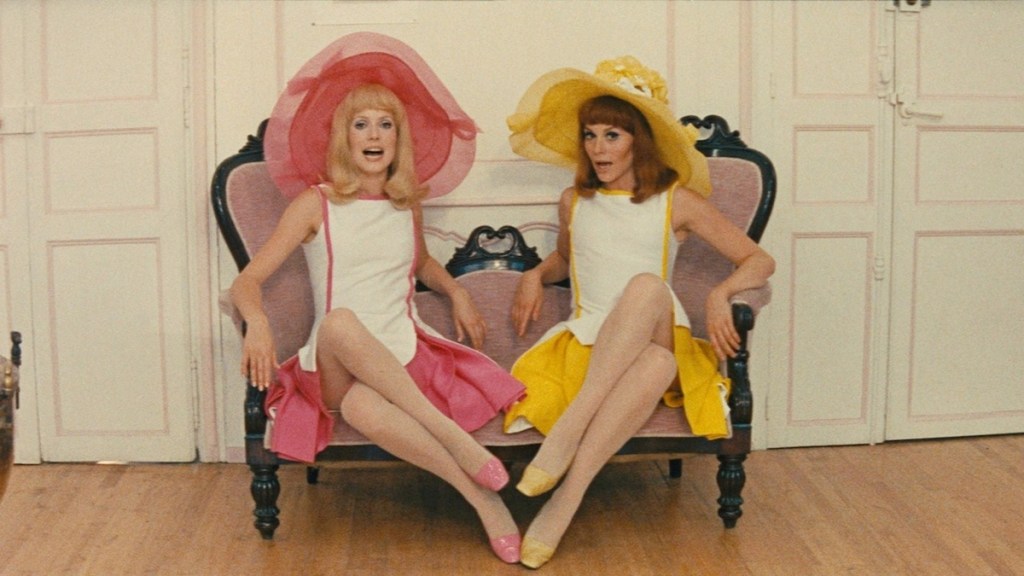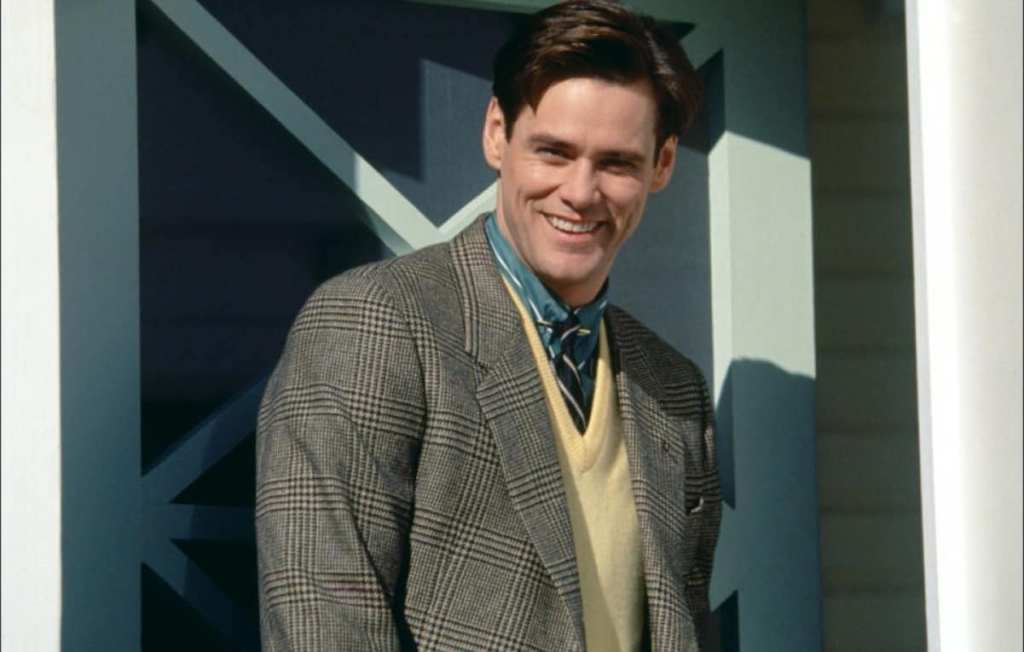Not much is yet known about the plot of Greta Gerwig’s Barbie. There are rumors that its plot is tangentially related to the manufacture of real-life Barbie toys; it seems that Ryan Gosling has fully submerged himself in the character of Ken; and thematically the film is expected to have a great deal in common with Christopher Nolan’s Oppenheimer when it releases on the same day. Clearly.
Still, all we know for certain is that Barbie will be the greatest, most revolutionary use of cinematography since The Horse in Motion (1878).
Needless to say, we’ve become fascinated by this film well before it’s come out, and any snippet or clue about Gerwig’s intentions has been eagerly snapped up. So we were immediately interested when, in an interview with Vogue magazine, Margot Robbie revealed that the cast and crew regularly gathered for “Movie Church,” which was a chance to watch a selection of films that served as inspiration for Gerwig on Barbie. This knowledge seems to match last year’s discovery by eagle-eyed fans of a Letterboxd account under the name MaggieAckerley, which in turn contained a watch list called “Watch for Barbie.” To a certain extent, the list has already been verified, with the Vogue profile revealing The Umbrellas of Cherbourg was one of the films featured in Movie Church.
Further, the list not only makes for a great pre-Barbie-release watchlist but, if genuine, gives us an insight into the sort of film Barbie intends to be. And for all the neon pink in the trailers, it is a darker film than you might initially expect.

The Umbrellas of Cherbourg (1964)
This French film by Jacques Demy is widely considered one of the greatest movie musicals of all time, and along with the 1948 classic The Red Shoes, Gerwig has already pointed to it as one of the classic musicals that she felt guided Barbie.
Like what we’ve seen of Barbie, The Umbrellas of Cherbourg takes place in a heightened reality. Even most musicals usually have singing and dancing interludes between scenes of regular drama. But from the first line of dialogue, The Umbrellas of Cherbourg is sung all the way through, even for the most throw-away lines. It’s a wall-to-wall sung-thru musical, which was unheard of in cinema at the time.
Yet through that heightened sense of reality, this is a movie that tells an oddly grounded and practical story—miles away from the frothy comedy fantasies being churned out by MGM and the rest of Hollywood in the 1950s. In Umbrellas, when a young couple is separated by the man being drafted into the army, the audience is prepared to expect a tale of how love conquers all. Instead we get a story of compromise, even settling, that ends with its protagonists settling for the kind of secure, practical life choices most romances rail against.
If this has been a major influence on Barbie, with its story about Barbie (Robbie) entering the “real” world, it might hint at some distinctly un-Hollywood storyline and messages. Could it even strive for a similarly bittersweet ending?

The Young Girls of Rochefort (1967)
Greta Gerwig is clearly a big Jacques Demy fan. Watching The Young Girls of Rochefort it’s easy to see how it has inspired the look of Barbie. The Technicolor palette is even more intense here than it is in The Umbrellas of Cherbourg. In fact, Gerwig’s director of photography, Rodrigo Prieto, created a color template especially for the movie dubbed “Techni-Barbie” that is clearly inspired by the use of color here and in Umbrellas.
“They have such a high level of what we came to call authentic artificiality,” Gerwig said in her interview with Vogue. “You have a painted sky in a soundstage. Which is an illusion, but it’s also really there. The painted backdrop is really there. The tangibility of the artifice is something that we kept going back to.”
The plot of The Young Girls of Rochefort, however, is a much more traditional movie rom-com than Umbrellas. Various romantic pairings move through the film, their plotlines resulting in numerous missed connections until it all ties up neatly at the end. The film’s main characters, the twins Delphine and Solange, spend the film plotting to escape to Paris in search of romance, leaving behind a town that frankly looks like paradise even if you ignore the constant musical numbers and sailors on-tap. It’s not hard to see how that vibe might feed into Barbie’s own journey.
Puberty Blues (1981)
Moving away from France this time, Puberty Blues is an Australian coming-of-age film that, like The Young Girls of Rochefort, is about two girls seeking out more in life, based on a “proto-feminist” novel. It also touches on a theme that will be at the heart of the Barbie movie. In the Vogue interview, Gerwig talks about girls growing up and how “they’re funny and brash and confident, and then they just—stop.” Talking about Barbie’s story, Gerwig said, “How is this journey the same thing that a teenage girl feels? All of a sudden, she thinks, ‘Oh, I’m not good enough.’”
This, combined with the adult but unglamorous compromises of Umbrellas, all hint toward a story that has a much more emotionally resonant and, frankly, sadder vibe than The Lego Movie it has been repeatedly compared to (and The Lego Movie wasn’t exactly short of tear-jerker moments in the first place).

Splash (1984)
One thing that is not hard to glean from the trailers is that Barbie’s journey from her world to the “real” world will be a fish-out-of-water story, and you can’t get a much more literal fish-out-of-water story than Splash, the boy-meets-mermaid tale starring a young Tom Hanks and Daryl Hannah as the mermaid, Madison. We can expect Madison’s journey to have a lot of parallels with Barbie’s, as they both learn about shopping, television, and the general horror and malaise of modern life.
That said, while Barbie seems assertive and in control in almost every scene we’ve seen of her so far, Madison spends a lot of the film largely acting as a receptacle for Hanks’ attraction, befuddlement, and fear of commitment. While it is easy to see the vibe Gerwig is looking to take from this film (similar to other fish-out-of-water comedies like Elf), it will be interesting to see if there is anything else Barbie borrows.

The Truman Show (1998)
The most recent film on the list is possibly the most on-the-nose. The Truman Show is about a man in an idyllic world looking for a way to break out of it and find something real. Everything about his life, his house, his clothes, his job, and even his relationship is constructed, an advert for an audience of invisible viewers.
It’s not hard to see why this works as the bones for a story about Barbie. However, while Truman seems desperate to find his way out of the fantasy world he is born into, Barbie seems perfectly happy in hers (judging by the hilarious riff on the “Red Pill” scene in the trailers).
But a key part of The Truman Show that lines up with some of the other films on this list is that Truman is never promised a happy ending. The film ends with him saying goodbye to the audience and stepping through a door and out of the fantasy. His reward is a truth and reality that we never see, but with no guarantees about what that reality will hold.We already know that Barbie is going to follow its heroes through that door and into their adventures on the other side, but it may not all end happily-ever-after, at least not in the way you expect. Imagine a Barbie movie that features Barbie rejecting her dream house at the end.
The post The Barbie Cast’s Required Viewing Suggests a Darker Movie Than You Expect appeared first on Den of Geek.


0 Commentaires